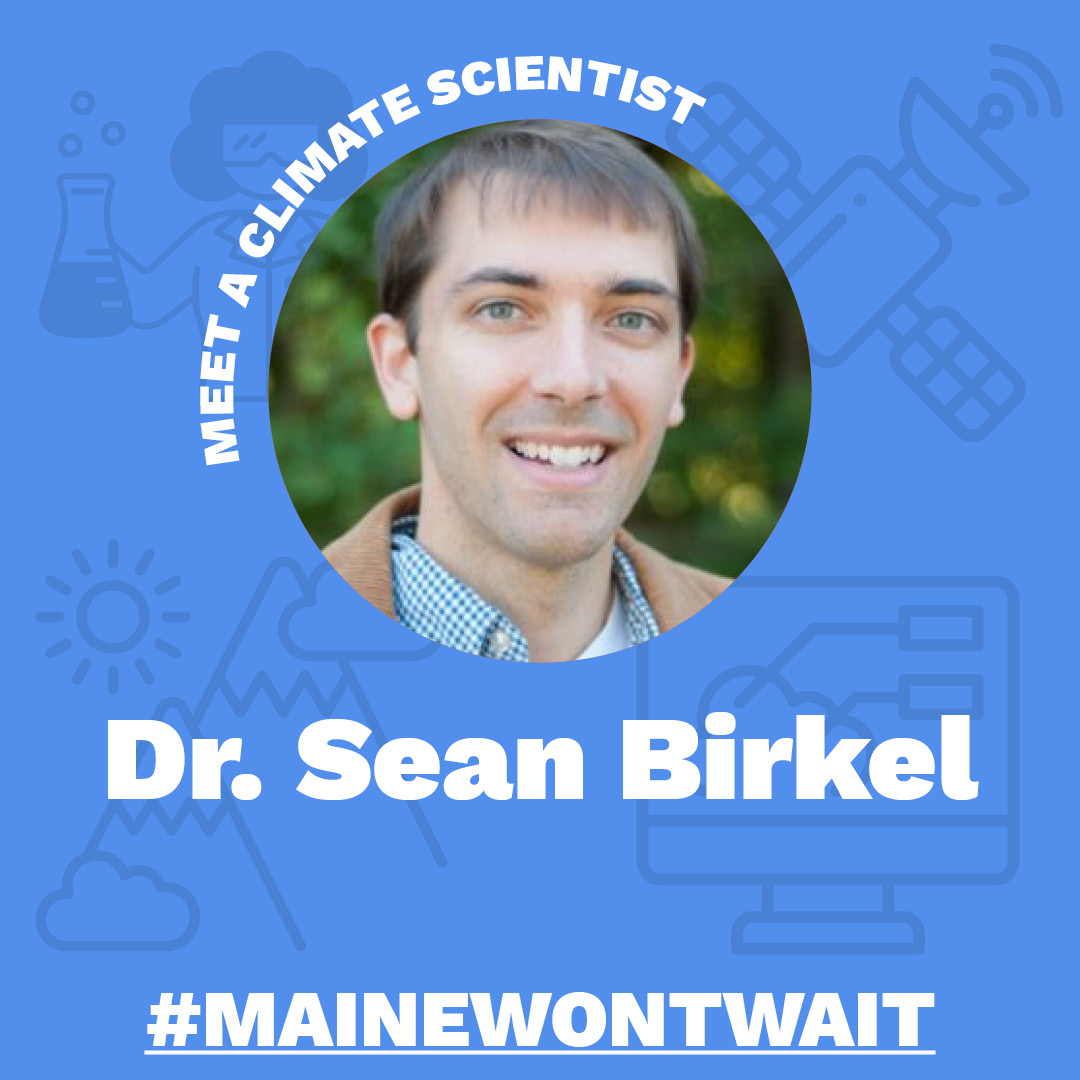
Meet a Climate Scientist: Maine State Climatologist Dr. Sean Birkel
Dr. Sean Birkel’s interest in science started around age five when his parents bought him a telescope. Sean later became fascinated with Earth’s climate while taking an Ice Ages course at the University of Maine. The course also launched Sean’s journey to becoming a climate scientist.
Today Dr. Birkel is the Maine State Climatologist based at the University of Maine with a joint appointment as an Assistant Professor to the Climate Change Institute and Cooperative Extension. He also developed and maintains a climate and weather model data visualization website called ClimateReanalyzer.org and is a member of the Scientific and Technical Subcommittee (STS) of the Maine Climate Council.
Dr. Birkel answered a few questions to help kick-off our new ‘Meet a Climate Scientist’ series. Do you have questions you would like to ask a climate scientist? Email us!
- What is a State Climatologist? Does every state have one?
The role of a state climatologist is to provide climate services – to collect, disseminate, and interpret climate data to help inform decision-making and planning. Most state climatologists are based at an academic institution, while some work within a state government agency. State climatologists are recognized by the National Centers for Environmental Information (NCEI) and also have membership in the American Association of State Climatologists (AASC). Currently all but one state has a state climatologist; Puerto Rico has one also. - When did you become the Maine State Climatologist? What did you do prior?
I became the Maine State Climatologist in 2015. This role was in addition to being a Research Assistant Professor at the Climate Change Institute. - When did you know you wanted to be a scientist?
I first became interested in science around the age of 5 or 6 when my parents bought me a telescope, and science was always my favorite class in grade school. - What did you study in order to become a Climate Scientist?
I majored in geology as an undergraduate at the University of Maine. In my sophomore year, at the suggestion of my undergraduate advisor, I took a course on Ice Ages and became fascinated by the sensitivity of Earth’s climate, and by how subtle changes in energy balance can effect enormous global changes. This led me to graduate research (also at UMaine) on past glaciation of North America. My focus shifted to modern climate when I began a postdoctoral fellowship at the Climate Change Institute. I joined the research faculty at the Institute in 2013, and with my climate research taking an increasing focus on Maine, I was offered the opportunity to assume the role of state climatologist. - What does a ‘typical’ day for you look like?
My job responsibilities include conducting climate research, advising graduate students, writing research papers and grant proposals, and providing climate services as state climatologist. A considerable aspect of my work over the past couple of years has been serving on the Scientific and Technical Subcommittee (STS) of the Maine Climate Council, in particular contributing to the STS Scientific Assessment of Climate Change and Its Effects in Maine in 2020 (which serves as the scientific basis for the Maine Won’t Wait climate action plan) and the Maine Climate Science Update in 2021. I also work with collaborators to bring climate and weather data tools to agriculture stakeholders. - What are Maine’s biggest climate change-related threats?
Climate change brings many challenges – warming temperatures, shifting season characteristics (e.g., shorter, milder winters and longer, warmer, and more humid summers), changes in weather patterns toward more extremes, and sea level rise – that impact Maine’s economic activity and natural resources.
For example, extreme precipitation events have increased in the Northeast more than any other U.S. region, as shown in the Fourth National Climate Assessment. Heavy precipitation, especially in the last couple decades, is also reported in the Maine Climate Council's STS Scientific Assessment report. Managing the impacts from these events – from localized flooding, to excess runoff, to crop damage among other effects – is an important challenge to meet now as future warming could exacerbate the problem.
For island and coastal communities, sea level rise is a particularly critical issue. The Maine Climate Council’s STS Scientific Assessment report indicates 1.5 to 3 feet of relative sea level rise by 2050 and 3.9 to 8.8 feet of rise by 2100. This has important implications for flooding and erosion that will impact civil infrastructure and coastal ecosystems such as salt marshes. - Closing thoughts?
I recently watched C-SPAN coverage of Carl Sagan’s 1985 congressional testimony on the greenhouse effect, in which he very eloquently articulated the looming problem of rising CO2 concentration in the atmosphere. One of his statements really gave me pause. He said, “[This] is a problem which transcends our particular generation. It is an intergenerational problem. If we don't do the right thing now, there are very serious problems that our children and grandchildren will have to face.” Sagan’s testimony was not long after I got my telescope. The children to whom Sagan referred are my generation; the grandchildren are my kid’s generation. So here we are almost 37 years later seeing the problems unfold. And that to me underscores the importance of the Maine Climate Council’s work and the Maine Won’t Wait climate action plan.